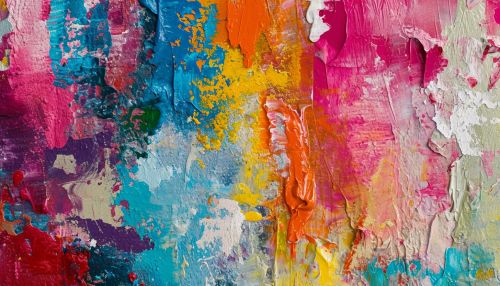Abstract Art
Origins and Early Development
Abstract art is a style of art that does not attempt to represent an accurate depiction of visual reality. Instead, it uses shapes, colours, forms, and gestural marks to achieve its effect. The term "abstract art" is often used as a synonym for non-representational art, a somewhat narrower term. Non-representational art is art that is not based on external, visual reality. This is different from abstract art which can, and often does, start with a base of something visually real, and then abstracts it.
The roots of abstract art can be traced back to the late 19th and early 20th centuries, when artists began to move away from traditional forms of art-making. This shift was in part a response to the advent of photography, which offered a new, more accurate means of capturing reality. Artists like James McNeill Whistler and J.M.W. Turner began to explore ways of depicting the world that were not purely representational, paving the way for the development of abstract art.
Key Movements and Artists
There have been many movements within abstract art, each with its own distinct style and philosophy. Some of the most significant include Cubism, Abstract Expressionism, and Minimalism.
Cubism, pioneered by Pablo Picasso and Georges Braque, was one of the first abstract styles of modern art. Cubist paintings ignore the traditions of perspective drawing and show you many views of a subject at one time.
Abstract Expressionism emerged in New York in the 1940s. It is best known for large-scale paintings that break away from traditional processes, often featuring intense colour and gestural brushstrokes. Key artists include Jackson Pollock, Mark Rothko, and Willem de Kooning.
Minimalism, also known as ABC art, is the culmination of reductions in abstract art. Minimalist sculptures are often large, manufactured objects that command spaces, while paintings are impersonal and contain few references to anything outside of themselves.
Techniques and Materials
Abstract artists employ a variety of techniques and materials to create their work. These can range from traditional painting and sculpture, to more modern methods like collage and assemblage, to the use of new technologies such as digital art.
One common technique in abstract painting is the use of colour fields. Color Field painting is characterized by large flat areas of color spread across the entire canvas to create an unbroken surface and a flat picture plane. Color field painting is related to but distinct from Abstract Expressionism.
Another common technique is gestural abstraction, where the emphasis is placed on the process of making the artwork. The gestural abstraction of the New York School (which includes Abstract Expressionism) is often characterised by drips, splashes and strong brushstrokes.
Influence and Legacy
Abstract art has had a profound influence on the art world and continues to be a major force in contemporary art. It has opened up new possibilities for exploration, allowing artists to push the boundaries of what art can be.
The legacy of abstract art can be seen in various forms of contemporary art, including conceptual art, installation art, and digital art. It has also influenced the design and aesthetics of architecture, fashion, and interior design.
See Also


